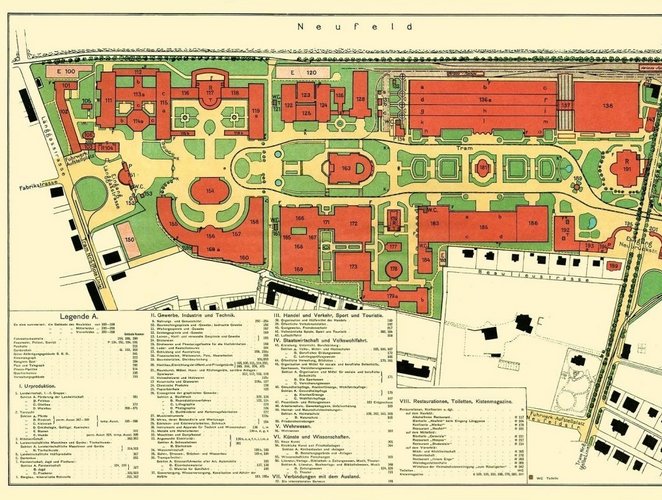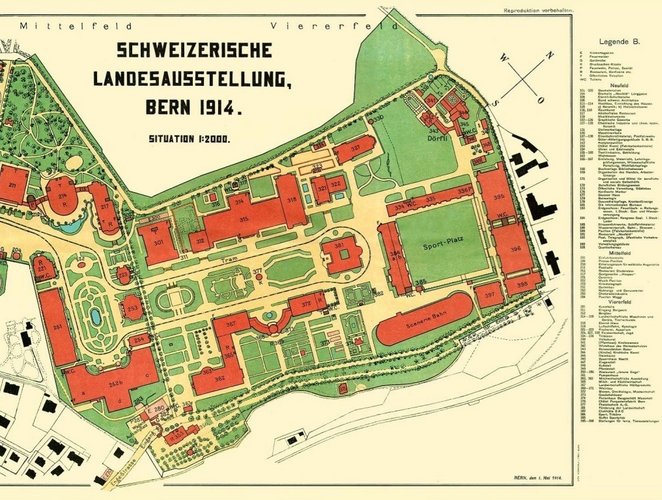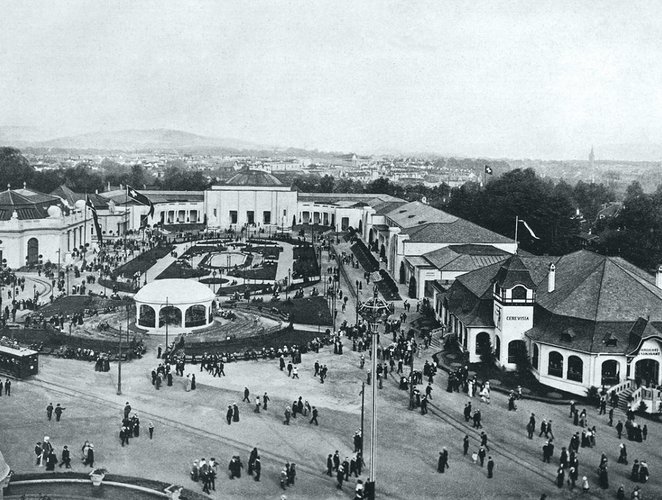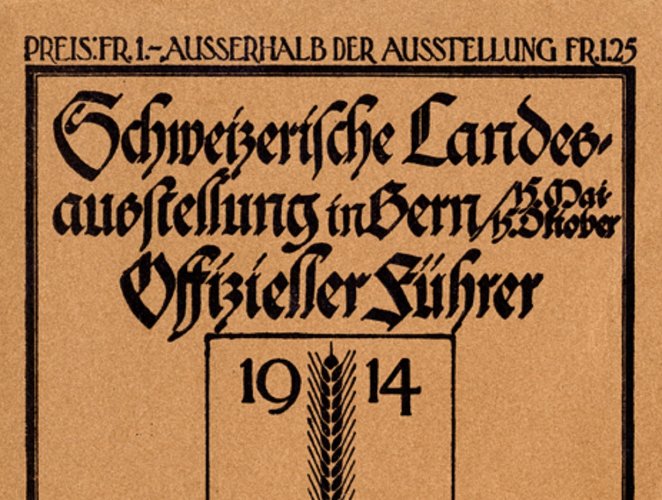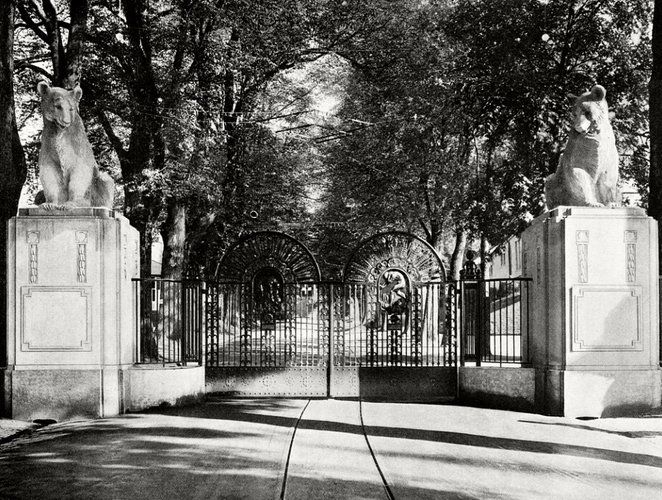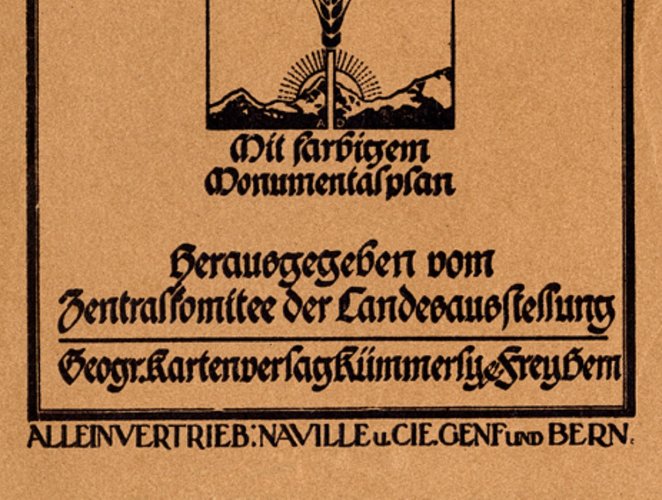It was not only the exhibition poster by Emil Cardinaux, which was described as a beanstalk, that aroused the anger of the Romands. They were also disturbed by the architecture. The Style de Munich proved that the German-speaking Swiss were German-friendly.
The spirit of Geneva no longer prevailed in the run-up to the National Exhibition.
The climate on the eve of the First World War was marked by the antagonism between France and Germany. The architecturally modern face was to be uniform and thus characterise the National Exhibition. Even the Village Suisse of Geneva with its colourful mix of houses in the architectural styles of all regions had to give way to a uniform, Bernese village. Instead of kitsch, country life close to nature was to be shown. Instead of junk, the women in traditional costume sold only valuable, rural handicrafts that found the jury's favour. It was a time of recollection of rural culture.
On the upper floor of the Dörfli restaurant Zum Röseligarten, the Heimatschutztheater performed plays by Otto von Greyerz. Other members of the theatre jury, such as Josef Reinhart and Hermann Hesse, who later won the Nobel Prize for Literature, also ensured that the quality of the folk theatre improved, which Greyerz described as a dreadful mixture of the frightful and the strenuously stupid. Even in the run-up to the national exhibition, the industry threatened a boycott. The reason for this was the cultural-critical attitude of the tradesmen, who opposed the profit-oriented industry and wanted above all to cultivate Swissness. They also criticised the government's pro-worker attitude, which was expressed in the revision of the new factory law.
Despite the war: The show must go on
In the end, 8'000 exhibitors came. 3.2 million tickets sold proved the growing interest in the National Exhibition. On 7 July, the Belgian King was a guest. It was the last carefree time before 220'000 men were called up for mobilisation on 1 August. The Eidgenössische Schwing- und Älplerfest (Federal Wrestling and Alpine Festival) was postponed and the exhibition director Emil Locher considered closing it. The Federal Council showed the way - he was keen for the event to continue. The trade fair for export promotion became a forum for sharpening the national buyer and consumer conscience.
Fotos: © Virtuelles Museum www.expoarchiv.ch
